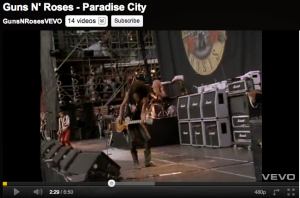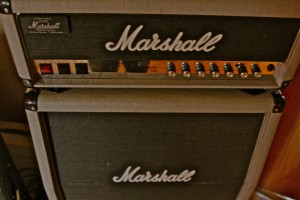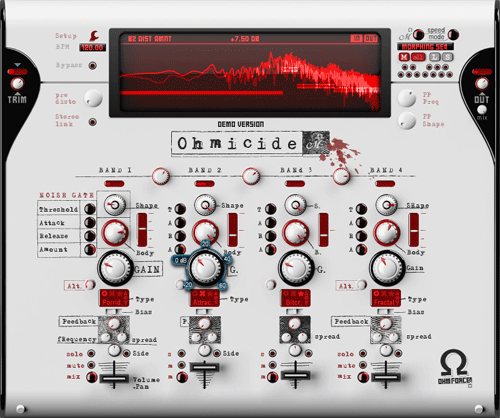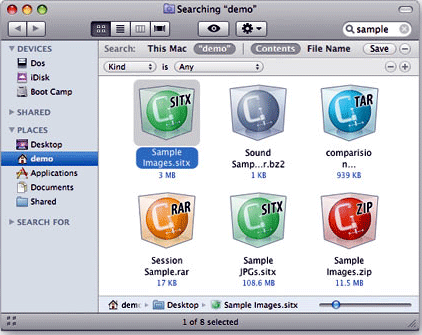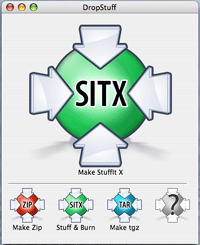
If I was stuck in a studio on a desert island, and could only choose one compressor to bring with me, I’d grab a Distressor. The Distressor is without question the most verstile compressor on the market. If you walk into any professional recording studio in Nashville, or around the world, you’re bound to find at least one of these pieces in the room. If you drop by The Record Shop, you’ll find four of them. Why, you might ask? One, because its a bad mama jama. Two, because it adds a classic sound to digital recordings. Three, because we work on such a wide range of projects, we are often going after a different “sonic vibe” from song to song. The Distressor gives us the ability to shape the sound to fit the song. In this segment of “Behind The Gear” we’ll discuss how we utilize the Distressor here at The Record Shop, and offer some tips for using it on your own. So where did this magical piece of studio gold come from? Read on…..
Empirican History EL8X
The Distressor was developed in 1995 by Dave Derr. Dave started Empirical Labs as a recording studio and electronics consulting firm. He was also part of the design team at Eventide that created the H3000, a legendary effects processor. It’s clear that this experience played a big role in the innovation of functions on the Distressor. Simply put, Dave took the best features from a number of classic studio compressors, added modern functionality, and ease of use, while maintaing a “vintage” tone. As The Empirical Labs motto says, “We want to make products that work a little easier, a little better, and a lot longer – and make sure they are fun to use.” I think they’ve hit their mark.
-If you are interested in learning about the history of the Distressor and Empirical labs, check out this article at Mercenary Audio. The guys have a great story about how they helped Dave name the Distressor-
Vintage Features
Back in 1997, Mix columnist Paul White said this about the Distressor, “If you’re one of those people who believe only tube technology can deliver the true classic sound, a few minutes spent using the Distressor might cause you to re-think your position.” While digital recording technology continues to improve, we still turn to analog gear for its “musical response” and “warmth.” Usually, the word “warmth” refers result of tube saturation that creates a round, full sound. However, in the case of The Distressor, warmth is more like an adjective. Here are some of the features that make the Distressor so unique.
–Distortion Modes
The Distressor has two distortion modes that emit a warm, harmonic distortion to the audio signal. The Dist 2 mode enhances the second harmonics, similiar to the saturation of a Class A Tube. The Dist 3 mode features a third harmonic that has the qualities of a Class B tube, or analog tape machine. We often use the Distressor for these modes alone. By setting the ratio to 1:1, you can process the sound using these settings without compressing the signal.
-Detector Modes
The Distressor also features two audio modes that vary the response of the device. The first detector mode is the High Pass Filter mode (HP). In the HP mode the Distressor does not react to low frequency energy in the sound source. This keeps the Distressor from reacting irrationally to a sudden rise in low end, such as a “b” or “p” sound from a vocalist. The second detector mode, called the “band emphasis” mode, makes the compressor react more drastically to harsh sounds in the high-mid frequency range. This mode can be useful on a vocalist that has a piercing tone to their voice on high notes, or to offer an smooth “analog” texture to an instrument.
Settings
Another unique design feature of the Distressor is the Ratios and Curves. Compressors generally have seperate threashold and ratio controls. The threashold sets the volume level at which the compressor starts to work, while the ratio determines how drastically it reacts. In the case of the Distressor, the threshold has been strategically determined within the ratio that is selected. The Distressor has eight ratio options to choose from. Each setting provides a unique response to the signal, exhibiting a musically pleasing effect on everything from subtle compression to dynamic destruction.
-For more detailed information on the Ratio settings of the Distressor, check out the Empirical Labs website here….-
How We Use It
At The Record Shop, we use our Distressors mainly on Vocals, Drums, Guitars, and anything that calls for a “classic” or “gritty” vibe. We love the “Nuke” mode, a setting that makes the distressor act as a “brick wall” limiter, with a unique release slope. This setting is great for big room sounds. We also make use of an option called “Brit Mode” that simulates the effect of the classic 1176 Limiter set to “all buttons in.” (a setting that became popular in 70’s for aggressive drum compression.) The Distortion modes are an invaluable assest to the Distressor and can be heard on nearly every recording that comes out of The Record Shop. The most useful feature of the Distressor is its overall tonal cahrecteristics. It is a great option for anything that needs to be smoothed out, warmed up, or given some edge. If you would like to hear more examples of how we utilize the Distressor, leave us a comment and we’ll send you our favorite settings.
Check back next week for our next installment of “Behind The Gear at The Record Shop”, highlighting the legendary 1176 Limiter. In the meantime, feel free to drop by our Gear Page for more information on our vast array of equipment.
As always, we love to hear feedback on our articles. If this was helpful, or a complete waste of your time, let us know! We love making new friends as well. Feel free to drop by our page on Facebook and sign up for our monthly newsletter to receive valuable resources and updates on the studio. Thanks for dropping by For The Record. Catch you next week!
-Giovanni
Therecordshopnashville.com
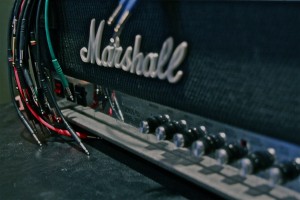 The Input Gain pot varies the amount of gain in each mode; if you set this low you get a clean tone, you may find that it is too low when you switch to a lead tone. No prob Bob, pull on that knob and you’ve switched into the second gain mode called the Rhythm Clip, which gives you a distorted sound. Mode 3, the Lead Channel, can be switched to via footswitch or by pulling the Output Master knob. Marshall placed a Lead Master control knob as well to balance the volume of the Clean, or Rhythm Clip, with the Lead volume. Let us not forget that these amps are also Tonal Beasts that changed the sound of Rock N’ Roll forever!
The Input Gain pot varies the amount of gain in each mode; if you set this low you get a clean tone, you may find that it is too low when you switch to a lead tone. No prob Bob, pull on that knob and you’ve switched into the second gain mode called the Rhythm Clip, which gives you a distorted sound. Mode 3, the Lead Channel, can be switched to via footswitch or by pulling the Output Master knob. Marshall placed a Lead Master control knob as well to balance the volume of the Clean, or Rhythm Clip, with the Lead volume. Let us not forget that these amps are also Tonal Beasts that changed the sound of Rock N’ Roll forever!
